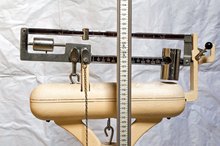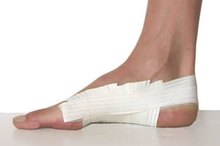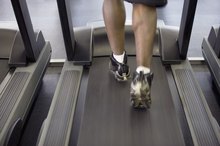What does fact checked mean?
At Healthfully, we strive to deliver objective content that is accurate and up-to-date. Our team periodically reviews articles in order to ensure content quality. The sources cited below consist of evidence from peer-reviewed journals, prominent medical organizations, academic associations, and government data.
- Annals of Saudi Medicine: Updated Recommendations for the Diagnosis and Management of Osteoporosis -- A Local Perspective
- Annals of Saudi Medicine: Updated Recommendations for the Diagnosis and Management of Osteoporosis -- A Local Perspective
- Osteoporosis International: Clinician’s Guide to Prevention and Treatment of Osteoporosis
- Osteoporosis International: Clinician’s Guide to Prevention and Treatment of Osteoporosis
- Drug Design, Development and Therapy: Osteoporosis – A Current View of Pharmacological Prevention and Treatment
- Drug Design, Development and Therapy: Osteoporosis – A Current View of Pharmacological Prevention and Treatment
The information contained on this site is for informational purposes only, and should not be used as a substitute for the advice of a professional health care provider. Please check with the appropriate physician regarding health questions and concerns. Although we strive to deliver accurate and up-to-date information, no guarantee to that effect is made.
How Does Osteoporosis Affect the Body?
Osteoporosis Weakens Bones
Osteoprosis most often affects the bones in the hip, spine and wrist. When you have osteoporosis your bones lose density and strength. Bone is dynamic -- it responds to exercise and weight changes. To help illustrate what happens, picture a white lace ribbon. The lace represents the bone becoming porous. Throughout your life your body is constantly breaking down old bone and replacing it with new bone. If you have osteoporosis, bone is being broken down faster than it is being replaced. This can occur due to a lack of physical activity, not enough calcium in your diet, genetics, smoking or certain medications.
If you are experiencing serious medical symptoms, seek emergency treatment immediately.
- Osteoprosis most often affects the bones in the hip, spine and wrist.
- When you have osteoporosis your bones lose density and strength.
Fractures Can Occur
What Can Happen When You Are Not Being Active or Exercising?
Learn More
If osteoporosis is left untreated, your bones can break. Fractures can occur as the result of a fall or just by lifting something, sneezing, coughing or bending and twisting during everyday activities. The breaks can be severe and cause disability, as in the case of a hip fracture. The American Academy of Orthopedic Surgeons states that "about 24 percent of hip fracture patients over age 50 die within 12 months after injury because of complications related to the injury and the extended recovery period.” You may also experience spinal or vertebral fractures also called compression fractures 2. Compression fractures occur when the vertebrae in the spine collapse onto one another. This can lead to chronic back pain, loss of height, and the development of a dowager's hump. A dowager's hump means that you have a rounded upper back, occurring as bones in your spine collapse. This posture not only causes chronic pain, it can also compress your lungs and inhibit their ability to expand. This can lead to problems breathing.
- If osteoporosis is left untreated, your bones can break.
- A dowager's hump means that you have a rounded upper back, occurring as bones in your spine collapse.
Symptoms May Not Be Obvious
Bone loss may be gradual and painless, with no symptoms to indicate the development of osteoporosis. The disease may progress silently until a fracture or dowager's hump presents. A person with osteoporosis can lose up to 4 inches in height and may suffer severe chronic pain as the result of the curvature in the spine. Getting a bone density test is vital. Women who are in menopause are particularly vulnerable to osteoporosis -- bone density should be monitored regularly. With early diagnosis, lifestyle changes and medical treatments can help stop and even reverse bone loss.
- Bone loss may be gradual and painless, with no symptoms to indicate the development of osteoporosis.
- The disease may progress silently until a fracture or dowager's hump presents.
Related Articles
References
- Annals of Saudi Medicine: Updated Recommendations for the Diagnosis and Management of Osteoporosis -- A Local Perspective
- American Academy of Orthopedic Surgeons: Hip Fracture Prevention
- Osteoporosis International: Clinician’s Guide to Prevention and Treatment of Osteoporosis
- Drug Design, Development and Therapy: Osteoporosis – A Current View of Pharmacological Prevention and Treatment
- Wright NC, Looker AC, Saag KG, et al. The recent prevalence of osteoporosis and low bone mass in the United States based on bone mineral density at the femoral neck or lumbar spine. J Bone Miner Res. 2014;29(11):2520–2526. doi:10.1002/jbmr.2269
- United States Office of the Surgeon General. "The Frequency of Bone Disease." In: Bone Health and Osteoporosis: A Report of the Surgeon General. 2004.
- Sözen T, Özışık L, Başaran NÇ. An overview and management of osteoporosis. Eur J Rheumatol. 2017;4(1):46–56. doi:10.5152/eurjrheum.2016.048
- National Institutes of Health Osteoporosis and Related Bone Diseases National Resource Center. Osteoporosis in Men. Updated October 2018.
- National Institutes of Health Osteoporosis and Related Bone Diseases National Resource Center. Osteoporosis Overview. Updated October 2018.
- Hashmi FR, Elfandi KO. Heel Ultrasound Scan in Detecting Osteoporosis in Low Trauma Fracture Patients. Orthop Rev (Pavia). 2016;8(2):6357. doi:10.4081/or.2016.6357
- National Osteoporosis Foundation. Medication and Treatment Adherence. Updated September 7, 2018.
- Black DM, Rosen CJ. Clinical Practice. Postmenopausal Osteoporosis. New England Journal of Medicine. 2016 Jan 21;374(3):254-62. doi:10.1056/NEJMcp1513724
- Ensrud KE, Crandall CJ. Osteoporosis. Annals of Internal Medicine. 2017 Aug 1;167(3):ITC17-ITC32. doi:10.7326/AITC201708010
- Tella SH, Gallagher JC."Prevention and Treatment of Postmenopausal Osteoporosis. The Journal of Steroid Biochemistry and Molecular Biology. 2014 Jul;142:155-70. doi:10.1016/j.jsbmb.2013.09.008
Writer Bio
I hold a Master's degree in exercise physiology/health promotion. I am a certified fitness specialist through the American College of Spots Medicine and an IYT certified yoga teacher. I have over 25 years experience teaching classes to both general public and those with chronic illness. The above allows me to write directly to the reader based on personal experiences.








